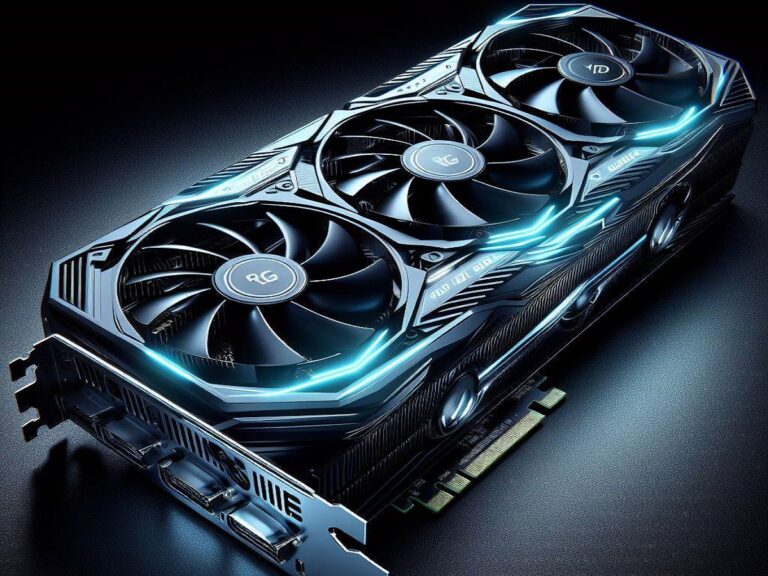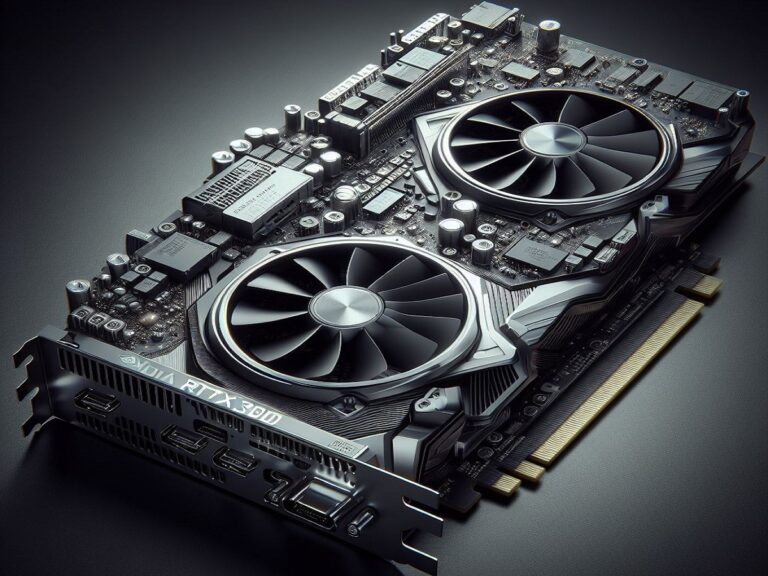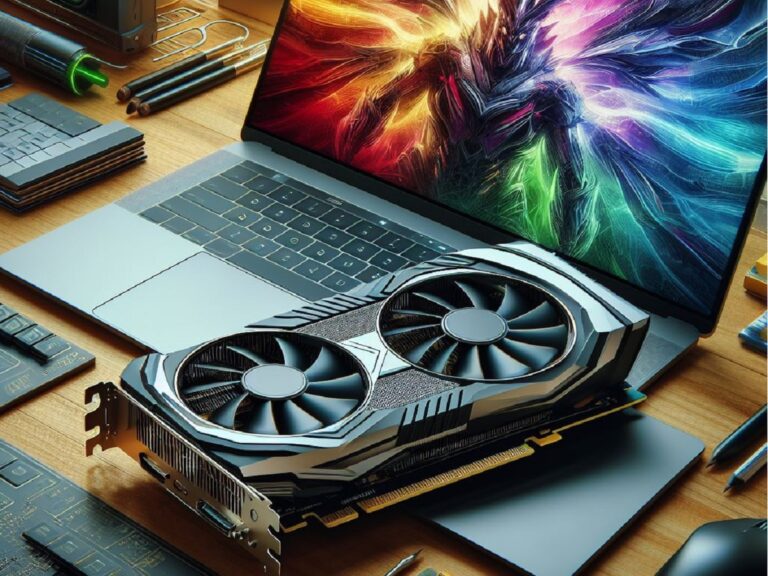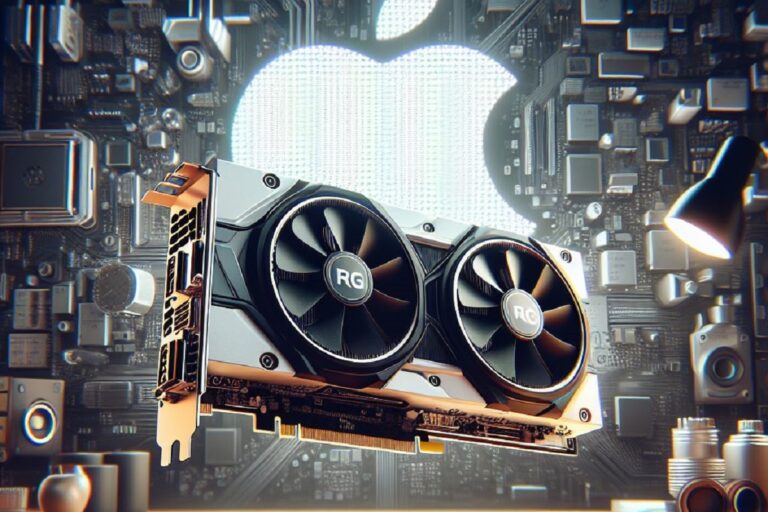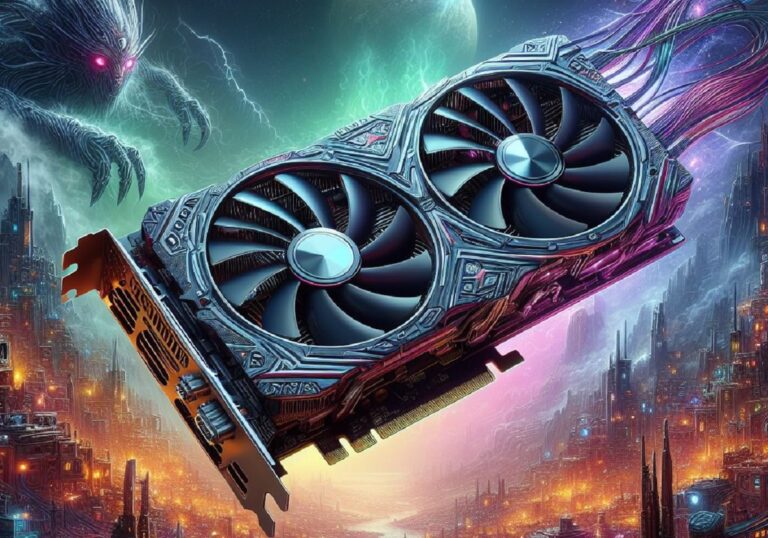The AMD Ryzen 9 7900X reigns supreme as a powerhouse CPU, demanding a graphics card that can match its prowess. Whether you’re a hardcore gamer, a creative professional, or a demanding multitasker, the right GPU elevates your experience. But with a plethora of options, navigating the graphics card market can be overwhelming.
This comprehensive guide empowers you to choose the ideal graphics card for your Ryzen 9 7900X setup. We’ll delve into key factors like resolution, workload demands, and budget to identify the perfect match. Explore top contenders from NVIDIA’s RTX and AMD’s Radeon series, analyze their strengths and compatibility, and discover the optimal graphics card to unlock the full potential of your Ryzen 9 7900X system.
Get ready to experience unparalleled performance, smooth visuals, and a truly next-level computing experience. Let’s find the graphics card that unleashes the true power of your Ryzen 9 7900X!
1. MSI Gaming GeForce RTX 3080 LHR 10GB GDRR6X
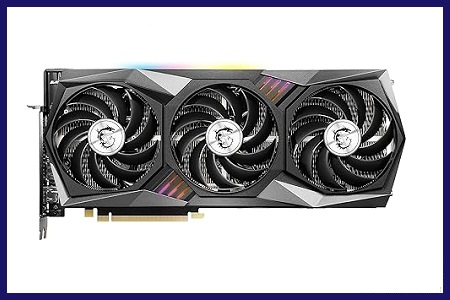
Key Features
The MSI Gaming GeForce RTX 3080 LHR 10GB GDRR6X is a powerful graphics card designed for high-performance gaming and demanding creative applications. Here’s a breakdown of its key features:
Performance: Boasting Nvidia’s Ampere architecture, the RTX 3080 LHR delivers exceptional performance for running modern games at high resolutions and frame rates. It features enhanced RT Cores for realistic ray tracing effects and Tensor Cores for AI-powered features like DLSS (Deep Learning Super Sampling), which can boost performance without sacrificing image quality.
Built for Gamers: The MSI Gaming variant comes equipped with a robust cooling system to ensure the card stays cool under heavy loads. This translates to quieter operation and potentially higher boost clocks for even better performance.
LHR: It’s important to note that this version of the RTX 3080 is LHR, which stands for Lite Hash Rate. This means it has a limiter on cryptocurrency mining performance compared to the original RTX 3080. If you’re primarily interested in the card for gaming, this shouldn’t be a concern.
Memory and Speed: The RTX 3080 LHR packs 10GB of GDDR6X memory with a 320-bit memory interface, providing ample bandwidth for handling high-resolution textures and demanding games.
Overall: The MSI Gaming GeForce RTX 3080 LHR is an excellent choice for gamers and creative professionals seeking a powerful graphics card for smooth gameplay, high frame rates, and excellent performance in creative applications. While the LHR designation reduces its appeal for cryptocurrency miners, it offers a compelling option for gamers focused on maximizing their in-game performance.
Things to Consider: As with any high-end graphics card, the RTX 3080 LHR requires a powerful PSU (power supply unit) and a compatible case with enough space to accommodate its large size. Before purchasing, ensure your system meets the recommended specifications for optimal performance.
2. EVGA GeForce GTX 1660 SC Ultra Gaming

Key Features
The EVGA GeForce GTX 1660 SC Ultra Gaming carves a niche for itself in the 1080p gaming landscape. Packing 6GB of GDDR5 memory and a dual-fan cooler, let’s explore if this veteran graphics card fits the bill for your needs.
Powerhouse for 1080p: Gamers on a budget rejoice! This EVGA GTX 1660 SC Ultra excels at delivering smooth gameplay with high settings at 1080p resolution. Expect crisp visuals and buttery frame rates in your favorite titles.
Cool & Quiet Operation: Those who prioritize a distraction-free experience will appreciate the dual-fan cooler. It keeps the card running under wraps thermally, resulting in minimal noise generation.
Factory-Tuned Performance: Out of the box, you get a slight factory overclock compared to the base GTX 1660. This translates to a performance boost without any manual tinkering.
EVGA Precision X1 Compatibility: Fine-tune your gameplay experience further with EVGA’s Precision X1 software. This utility allows for overclocking adjustments and fan control, giving you more control over your graphics card’s performance.
Considerations:
Limited to 1080p: While a 1080p powerhouse, the 6GB GDDR5 memory might bottleneck performance at higher resolutions like 1440p.
No Ray Tracing: The GTX 1660 series doesn’t support ray tracing, a fancy lighting tech found in newer RTX cards that creates hyper-realistic visuals.
Availability Check: Launched in 2019, finding the GTX 1660 SC Ultra new might be a challenge. Consider reputable used options or compare it to current offerings in a similar price range.
The Verdict:
For budget-conscious gamers seeking a reliable 1080p performer, the EVGA GeForce GTX 1660 SC Ultra Gaming remains a relevant contender. It offers excellent value with its cool and quiet operation, factory overclock, and EVGA software support. However, if you’ve set your sights on higher resolutions or crave the immersive effects of ray tracing, you might want to explore newer graphics card options.
3. Zotac Gaming Graphics Card GEFORCE RTX 3060
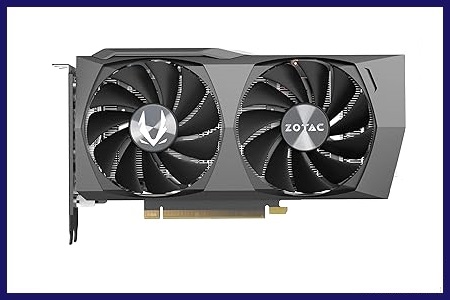
Key Features
Zotac’s GeForce RTX 3060 emerges as a tempting choice for budget-conscious gamers seeking the power of the RTX 3000 series without breaking the bank. Let’s delve into its strengths and considerations to see if it aligns with your needs.
Powerhouse Performance for 1080p and 1440p: Built upon Nvidia’s Ampere architecture, the RTX 3060 delivers impressive performance for running modern games at high frame rates, particularly at 1080p and 1440p resolutions.
DLSS and Ray Tracing Bliss: Experience cutting-edge features like DLSS (Deep Learning Super Sampling) that boosts performance without sacrificing visual quality, and ray tracing that injects games with hyper-realistic lighting effects for an immersive experience.
Zotac’s Customization Options: Depending on the specific Zotac model you choose, you might benefit from a factory overclock for a performance edge or unique cooling solutions to manage thermals.
VR Ready: The RTX 3060 is capable of handling virtual reality experiences, opening doors to new worlds of immersive gaming.
Choosing the Right Zotac Model: Zotac offers a variety of RTX 3060 variants with different clock speeds, cooler designs, and potentially RGB lighting. Research the specific model you’re considering to understand its unique strengths and weaknesses.
Availability and Pricing: Like most graphics cards in the current market, RTX 3060 stock can be limited, and pricing can fluctuate. Stay updated on availability and compare prices across retailers to secure the best deal.
Power Supply Requirements: The RTX 3060 has a higher power draw compared to previous generation cards. Ensure your power supply unit (PSU) meets the recommended wattage for optimal performance.
The Verdict:
The Zotac Gaming GeForce RTX 3060 is a solid option for gamers seeking a powerful and versatile graphics card for 1080p and 1440p gaming. It offers excellent value with features like DLSS, ray tracing, and VR readiness. However, carefully researching specific Zotac RTX 3060 models, staying informed on availability, and considering your PSU’s wattage are all crucial factors to consider before making a purchase.
4. MSI GT 1030 2GD4 LP OC Computer Graphics Cards
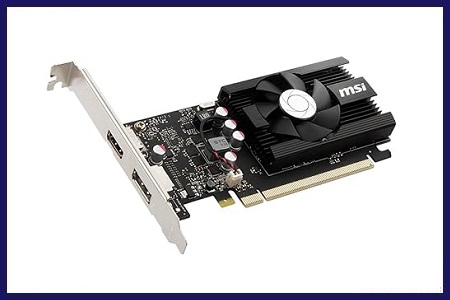
Key Features
Packing a punch for low-profile builds and budget-minded gamers, the MSI GT 1030 2GD4 LP OC carves a niche in the graphics card market. Here’s a breakdown of its pros and cons to help you decide if it’s the right fit for you:
Powerhouse for Everyday Tasks and eSports: Don’t be fooled by its size. The GT 1030 excels at handling everyday tasks and powering eSports titles at playable frame rates.
Low Profile Champion: This graphics card is a champion for compact builds. Its low-profile design makes it ideal for small form factor PCs where space is at a premium.
Double the VRAM, Double the Fun: Equipped with 2GB of GDDR5 memory, the GT 1030 offers a performance boost over variants with 1GB of memory, allowing you to enjoy smoother gameplay and handle textures in less demanding games more effectively.
MSI OC Advantage: This factory overclocked version delivers a slight performance nudge out of the box compared to the base model.
Not for AAA Gaming: While it handles eSports and lighter titles well, the GT 1030 isn’t intended for running modern AAA games at high settings or resolutions.
Consideration for Power Supply: The GT 1030 is a power-efficient card, but double-check your power supply unit wattage to ensure it meets the minimum requirements for smooth operation.
The Verdict:
The MSI GT 1030 2GD4 LP OC is a compelling choice for gamers on a budget who prioritize space-saving builds or for users who primarily utilize their PC for everyday tasks and less demanding games. It offers excellent value in a compact form factor with the bonus of 2GB of GDDR5 memory and a factory overclock. However, if you crave high-fidelity visuals in AAA titles, you might want to consider a more powerful graphics card.
5. ASUS Dual GeForce RTX 4070 Super OC Edition Graphics Card
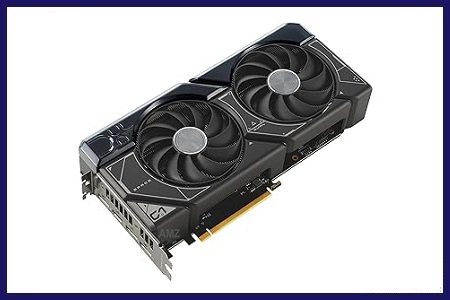
Key Features
The ASUS Dual GeForce RTX 4070 Super OC Edition graphics card positions itself as a contender for gamers seeking high-performance 1440p gameplay with the potential for venturing into 4K. Here’s a breakdown of its key features and considerations to help you decide if it’s the right fit for you:
1440p Powerhouse with 4K Potential: Boasting the NVIDIA Ampere architecture and the upgraded RTX 4070 Super chip, this ASUS card delivers excellent performance for running modern games at high frame rates, especially at 1440p resolution. With clever use of DLSS (Deep Learning Super Sampling), even 4K gaming becomes a possibility.
DLSS 3 and Ray Tracing Prowess: Experience the cutting edge of graphics with DLSS 3, which can boost performance without sacrificing image quality, and ray tracing, which injects hyper-realistic lighting effects for an immersive experience.
ASUS Cooling Expertise: The ASUS Dual variant features a proven dual-fan cooling system designed to keep the card running cool under load, ensuring quieter operation and potentially higher boost clocks for maximized performance.
OC Edition for Extra Performance: This factory overclocked edition provides a slight performance edge out of the box compared to the base model.
Memory and Speed: The RTX 4070 Super packs 12GB of GDDR6X memory with a 192-bit memory interface. While sufficient for most games at 1440p, the memory configuration might limit performance at higher resolutions like 4K without DLSS.
Consideration for Power Supply and Case Size: As with most high-end graphics cards, the RTX 4070 Super requires a powerful PSU (power supply unit) and a compatible case with enough space to accommodate its size. Ensure your system meets the recommended specifications for optimal performance.
The Verdict:
The ASUS Dual GeForce RTX 4070 Super OC Edition is a compelling option for gamers seeking a powerful 1440p graphics card with the potential for 4K gaming with DLSS. It offers excellent performance, ASUS cooling expertise, and a factory overclock for a slight performance boost. However, ensure your PSU and case can handle this card’s power requirements and physical size before purchasing.
How We Test Graphics Card for Ryzen 9 7900X
The mighty Ryzen 9 7900X processor craves a graphics card (GPU) that can match its muscle. To ensure compatibility and optimal performance, careful consideration is key before you hit that “buy” button. Here, we delve into the factors we scrutinize when testing GPUs specifically for the Ryzen 9 7900X, along with our testing methodology.
Essential GPU Considerations:
-
VRAM (Video RAM): The champion of smooth visuals, VRAM tackles texture-heavy tasks in games and demanding applications. With ever-increasing texture quality, GPUs come in diverse VRAM configurations. Our testing prioritizes 8GB to 12GB of VRAM for the Ryzen 9 7900X setup. This sweet spot guarantees seamless gameplay at 1440p and even 4K resolutions with maxed-out settings.
-
VRM (Voltage Regulating Module): This unsung hero on the GPU’s PCB (printed circuit board) ensures stable voltage delivery to the core. Unstable voltage translates to heat, potentially causing throttling or damage. We meticulously assess VRM cooling solutions offered by different manufacturers. Sufficient VRM cooling is paramount for peak performance and pushing boundaries through overclocking.
-
Form Factor: Gone are the days of uniform GPU sizes. Manufacturers (AIBs) offer multiple models with varying dimensions to cater to different case configurations and needs. Our testing considers form factor compatibility with popular ATX and smaller form factor cases. Double-checking your case’s GPU clearance is essential to avoid compatibility issues.
-
Power Connectors: Compatibility is crucial! We ensure the chosen GPU utilizes power connectors that your power supply unit (PSU) can provide. Modern high-end GPUs like the RTX 3090 Ti or RX 6900 XT often require three 8-pin connectors or a single 12-pin connector. Verifying compatibility eliminates potential roadblocks down the line.
-
Thermal Design Power (TDP): TDP indicates the maximum power a GPU consumes under heavy loads. A power-hungry GPU paired with an underpowered PSU results in frequent shutdowns or instability. Our testing considers the GPU’s TDP and compares it to the recommended PSU wattage for optimal performance. Manufacturer websites typically provide this information to ensure compatibility.
The Testing Arena:
Once we’ve shortlisted GPUs based on the criteria above, we put them through a series of rigorous benchmarks:
-
Synthetic Benchmarks: Tools like 3DMark and Unigine Heaven provide standardized measurements of a GPU’s raw performance. These benchmarks generate scores that allow for comparisons between different GPUs.
-
Real-World Gaming Benchmarks: We test the GPUs with a variety of popular games at different resolutions and graphics settings. This helps us gauge real-world performance and identify any potential bottlenecks with the Ryzen 9 7900X CPU.
-
Temperature and Power Consumption Monitoring: Throughout testing, we closely monitor the GPU’s temperature and power consumption. This data helps assess the cooling solution’s effectiveness and ensures system stability under load.
Conclusion
Selecting the perfect GPU for your Ryzen 9 7900X requires careful consideration beyond just raw power. By prioritizing factors like VRAM capacity (8GB-12GB for smooth 1440p and 4K gaming), robust VRM cooling for stability and overclocking potential, compatible form factor for your case size, matching power connectors to your PSU, and ensuring sufficient power delivery (TDP), you’ll create a perfectly balanced system.
Our testing methodology goes beyond specifications, incorporating synthetic benchmarks for raw performance comparisons, real-world gaming benchmarks to assess compatibility with the Ryzen 9 7900X, and temperature and power consumption monitoring for optimal performance and system stability.
Following this approach, we identify GPUs that truly complement the Ryzen 9 7900X, ensuring you get the best possible graphics card to unlock the full potential of your high-end gaming machine. Remember, the ideal GPU goes beyond just horsepower; it’s about finding the perfect match for your specific needs and system configuration.
FAQs
What’s the best overall graphics card for the Ryzen 9 7900X?
There isn’t a single “best” card, as it depends on your budget and desired resolution/performance. However, high-end options like the NVIDIA GeForce RTX 4080 or AMD Radeon RX 7900 XTX are great choices for maximizing performance at 4K resolutions with high frame rates. For a more balanced approach at 1440p, the NVIDIA GeForce RTX 3080 or AMD Radeon RX 6950 XT are powerful contenders.
What VRAM amount is ideal for the Ryzen 9 7900X?
For smooth gameplay at 1440p and even 4K resolutions with maxed-out settings, 8GB to 12GB of VRAM is a sweet spot. If you plan on playing demanding AAA titles at high resolutions and using features like DLSS (Deep Learning Super Sampling), opting for 12GB or more VRAM is recommended.
What factors should I consider besides performance when choosing a GPU for the Ryzen 9 7900X?
Form Factor: Ensure the GPU physically fits within your case. Check the dimensions of both the case and the GPU before purchasing.
Power Consumption (TDP): The Ryzen 9 7900X is a powerful CPU, so you’ll need a PSU (power supply unit) with enough wattage to handle both. Factor in the GPU’s TDP when choosing a PSU.
Power Connectors: Verify your PSU has the necessary power connectors to deliver power to the GPU. High-end cards might require multiple 8-pin connectors or a single 12-pin connector.
Cooling: Look for a GPU with a good cooling solution to avoid overheating during intense use.
Noise Levels: Consider how much noise the GPU generates, especially if silence is a priority for your PC setup.
Are there any budget-friendly options for the Ryzen 9 7900X?
While the Ryzen 9 7900X excels in high-end gaming, there are some mid-range options that can deliver good performance at 1080p and even 1440p with some setting adjustments. The NVIDIA GeForce RTX 3060 or AMD Radeon RX 6600 XT are examples of such cards that offer a balance between affordability and performance.
Where can I find reliable information on benchmarks and compatibility for the Ryzen 9 7900X with different GPUs?
Tech websites and YouTube channels often publish reviews and benchmark results for various GPUs tested with the Ryzen 9 7900X. Look for reputable sources that provide detailed performance data at different resolutions and game settings. Additionally, manufacturer websites often list compatible components, including PSUs for specific GPUs.
